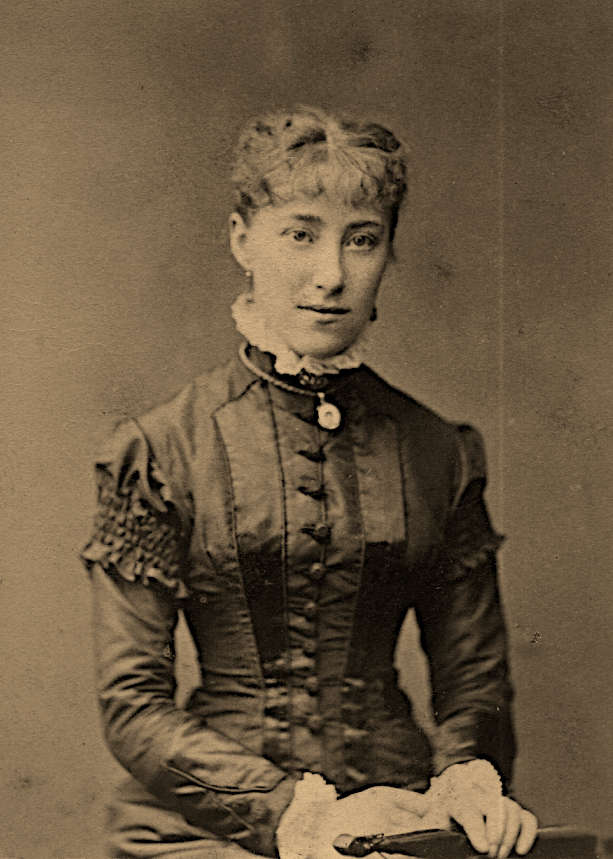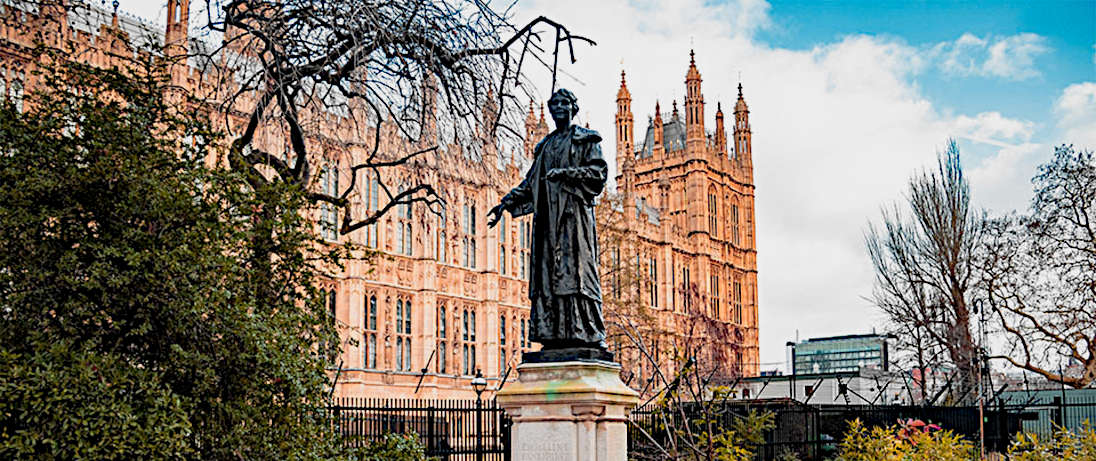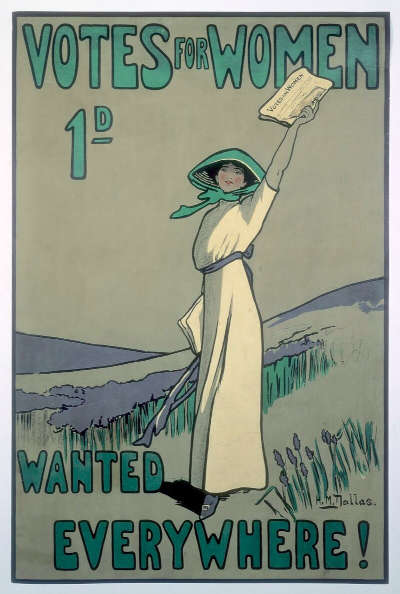Elementary / preliminary level English
Photo top of page. A statue to Emeline Pankhurst now stands outside the British Parliament, in London.
Today, in free and democratic countries, we accept that all adults can vote in free and fair elections; but this was not always the case. Today women are allowed to vote (in theory at least) in every country in the world; but this is a new freedom. Even in Europe, women could not vote in the small state of Liechtenstein until 1984... and in Kuwait, in the Middle East, they could not vote in national elections until 2005. A hundred years before that, the situation was very different everywhere. In 1905 women could only vote in a small handful of countries.
The first country to give women the vote was New Zealand.... in 1893. The first European country where women could vote was Finland, in 1906; but things were changing. Women were demanding the vote in democratic countries throughout the world.
In Britain in 1903, a woman by the name of Emeline Pankhurst set up a movement to demand votes for women. These women quickly became known as the Suffragettes; they were educated, and they were very active. They spoke in public, they wrote letters, and they marched in the streets. Many people laughed at them or told them to be quiet - but that just made them angry. They wanted men to listen.
Some Suffragettes were peaceful. Others believed in direct action. They broke windows, chained themselves to gates, and even went to prison. Some went on hunger strikes in prison to protest. It was a hard and painful fight, but they believed it was the only way to get results.... and they were right.
 Marie Naylor,
artist and Suffragette.
Marie Naylor,
artist and Suffragette.In 1907, one of the women who joined Emeline Pankhurst was my great great aunt, Marie Naylor. Marie was a successful artist who painted in London and Paris. She believed very strongly in justice and equal rights. Marie gave speeches at meetings, talking about women’s rights. In 1908, she took part in a famous protest outside Parliament in London, and was sent to prison for a short time. Later, in 1928, she was one of the women who carried Emeline Pankhurst’s coffin at her funeral.
The most famous action by a Suffragette involved a young woman called Emily Davison. On June 4th 1913, Emily went to see the Epsom Derby, one of the most important horse races in Britain. As the horses raced past, she ran out onto the track, in front of the King's horse. She died in hospital four days later.
Because of women like Emeline, Marie and Emily, the law began to change. In 1918, some women in Britain were allowed to vote for the first time. In 1928, all women over 21 could vote, just like men. It was a big victory. Today, we remember the Suffragettes as very brave women. They did not give up, even when people told them they could not win. But they did win! Thanks to people like them, women today have a voice and a vote all over the world.
Discover grammar in a new light
"A breath of fresh air" - IATEFL Voices

Print & ebook from Amazon,
Print book from Barnes & Noble, Waterstones & other good bookshops
Copyright notice.
This resource is © copyright Linguapress
This text may not be reproduced on other websites nor in printed form without written permission from the publishers. Reproduction is authorised exclusively for personal use by students, or for use by teachers with their classes.
Student worksheet
1. Words and spelling.
Complete the words in this extract from the articlle, by adding the missing letters.
2. Words and meaning
Look through the text, and find the words that correspond to the following meanings.
The women who fought for the right to vote.
To express your choice in an election
A group of people fighting for a cause.
A place where people are taken if they are very sick, or hurt.
3. Sequencing
Put the following events in the correct order (1–5) as they happened in history. For example A=1, which is wrong, of course.
B. Women in Britain could vote like men.
C. Women in New Zealand were allowed to vote.
D. Emily Davison died after running onto the race track.
E. Some women in Britain could vote for the first time.
Teachers.
Listening. Play the audio, but stop before the last word of each sentence or main clause. Ask students to provide the final word. For example, in the first paragraph, you will stop before, and students will shout out / say as designated.... elections / case / world / freedom / 1984 / 2005 (two thousand and five, or twenty-oh-five) everywhere / countries.
Language: note the differences in meaning between vote and voice, as illustrated in the last sentence of the article.
Grammar: note a lot of irregular verb forms in this text (six of them feature in the words and spelling exercise above). Simple modal structures: can and could.
Speaking. Student pair work: discussion. Divide your students into pairs. In each pair, one student is Emily Davison, the other is Marie Naylor, who is a few years older than Emily. The date is 1st. June 1913; Emily tells Marie of her plan.... but Marie is very worried....
About Linguapress. Founded as a print media publisher in 1980, Linguapress is today dedicated to providing free high-quality EFL / ESL resources online for all, anywhere in the world. You are free to use our online resources, within the limits of our copyright policy (basically, don't copy our resources onto any other publicly-accessible platform or website). To help keep these resources free for anyone to use, you can support linguapress.com by sharing with friends and colleagues, or liking us on social media, or buying our acclaimed books for yourself or your school.
© linguapress.com


 A Suffragette
poster.
A Suffragette
poster.
 Copyright
information.
Copyright
information.